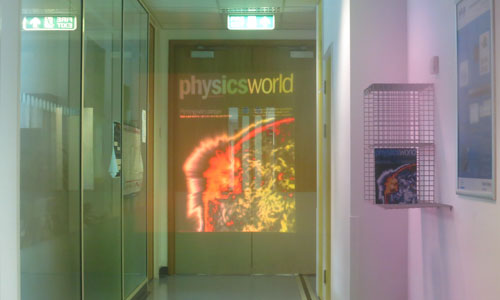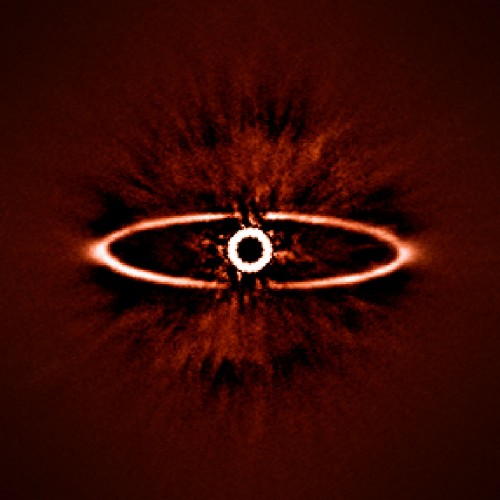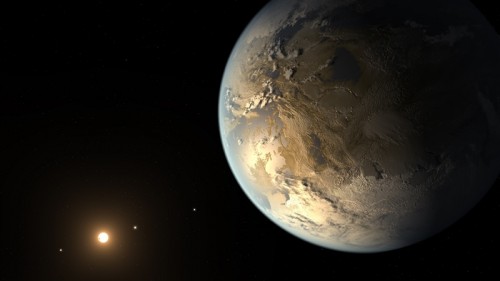Tag archives: imaging
Examining precious artefacts without breaking them
By James Dacey in Mexico
From pre-Hispanic archaeological treasures to the Modernist paintings of Frida Kahlo and Diego Rivera, Mexico is brimming with cultural artefacts. Yesterday I visited a centre at the National Autonomous University of Mexico (UNAM) that has developed techniques for investigating precious objects without damaging them.
View all posts by this author | View this author's profile
Physics World 2015 Focus on Medical Imaging now live
By Tami Freeman
Medical imaging is a multidisciplinary science encompassing a wide range of powerful techniques with applications in both patient care and fundamental biological studies. In this latest Physics World focus issue, we examine how imaging technologies such as X-ray computed tomography (CT), magnetic resonance imaging and other nuclear, ultrasound and optical imaging techniques have evolved in recent years. We also take a look at what improvements can be expected in the future.
Created in collaboration with our sister website medicalphysicsweb, the new focus issue on medical imaging can be accessed free of charge in digital-magazine format.
View all posts by this author | View this author's profile
Photonics by the Bay
By Margaret Harris in San Francisco
The International Year of Light is a global celebration, but right now, it’s definitely got its heart in San Francisco. For the past five days, experts in optics, lasers and biomedical imaging have been converging on the “city by the bay” for the annual Photonics West conference, and I’ve joined them in order to learn more about the hot topics in optical science.
View all posts by this author | View this author's profile
Physics World’s futuristic look

Holographic view: The August 2014 issue of Physics World, seen through the NPL device. (Courtesy: NPL/Richard Stevens)
By Tushna Commissariat
Some of you may remember a news story I wrote last month that looked at a new optical gadget that uses a holographic waveguide to augment reality. The device hopes to transform the wearable-display market – it allows users to overlay full-colour, 3D, high-definition images into their normal line of sight, thereby interacting with their surroundings. The waveguide was developed by UK-based company TruLife Optics, along with researchers from the adaptive-optics group at the National Physical Laboratory (NPL) near London.
SPHERE opens its ‘all-seeing’ eye

The dust ring around HR 4796A. (Courtesy: ESO/J-L Beuzit et al./SPHERE Consortium)
By Tushna Commissariat
While the fiery shades of the image above may seem familiar to fans of the Lord of the Rings movie franchise, pictured above in exquisite clarity is a ring of dust that surrounds the near-by star HR 4796A. The young, hot star – located a scant 240 light-years from Earth – has been of significant interest to astronomers since the circumstellar ring of debris was detected, thanks to an excess of infrared emissions from the star. While there have been many other images of the HR 4796A system, this particular image has been obtained by the new Spectro-Polarimetric High-contrast Exoplanet REsearch instrument (SPHERE), which was installed in May this year on the European Southern Observatory’s Very Large Telescope (VLT) at the Paranal Observatory in Chile. Thanks to the instrument, not only is the dust-ring clearly outlined, but the glare of the bright star at the centre of the picture has been supressed. This has provided a much clearer view of the whole system, which researchers think also harbours an exoplanet or two.
View all posts by this author | View this author's profile
Earth’s cousin, alien intelligence, Galileo’s game and more

Artist’s illustration of Kepler-186f. (Courtesy: NASA/SETI Institute/JPL-Caltech)
By Tushna Commissariat
Early last week, astronomers announced that they had found the first Earth-sized exoplanet that is comfortably within the habitable zone of its parent star, using NASA’s Kepler telescope. The new planet, dubbed Kepler-186f, is a close cousin of the Earth as it has a radius that is only 10% larger than that of the Earth, meaning that it could have liquid water on its surface, allowing for the tantalizing possibility of some form of life to exist upon it. At last count, Kepler has now discovered and confirmed 1706 exoplanets.
So it was rather interesting to come across two stories that looked at the implications of life beyond our planetary neighbourhood. Paul Gilster, who writes the Centauri Dreams blog had a rather interesting post on how artists and illustrators need to work with scientists to depict each new exoplanet, to make the images look visually stunning, while still being scientifically accurate. Gilster also talks specifically about the image (see above) that illustrates the newly found Kepler-186f.
View all posts by this author | View this author's profile